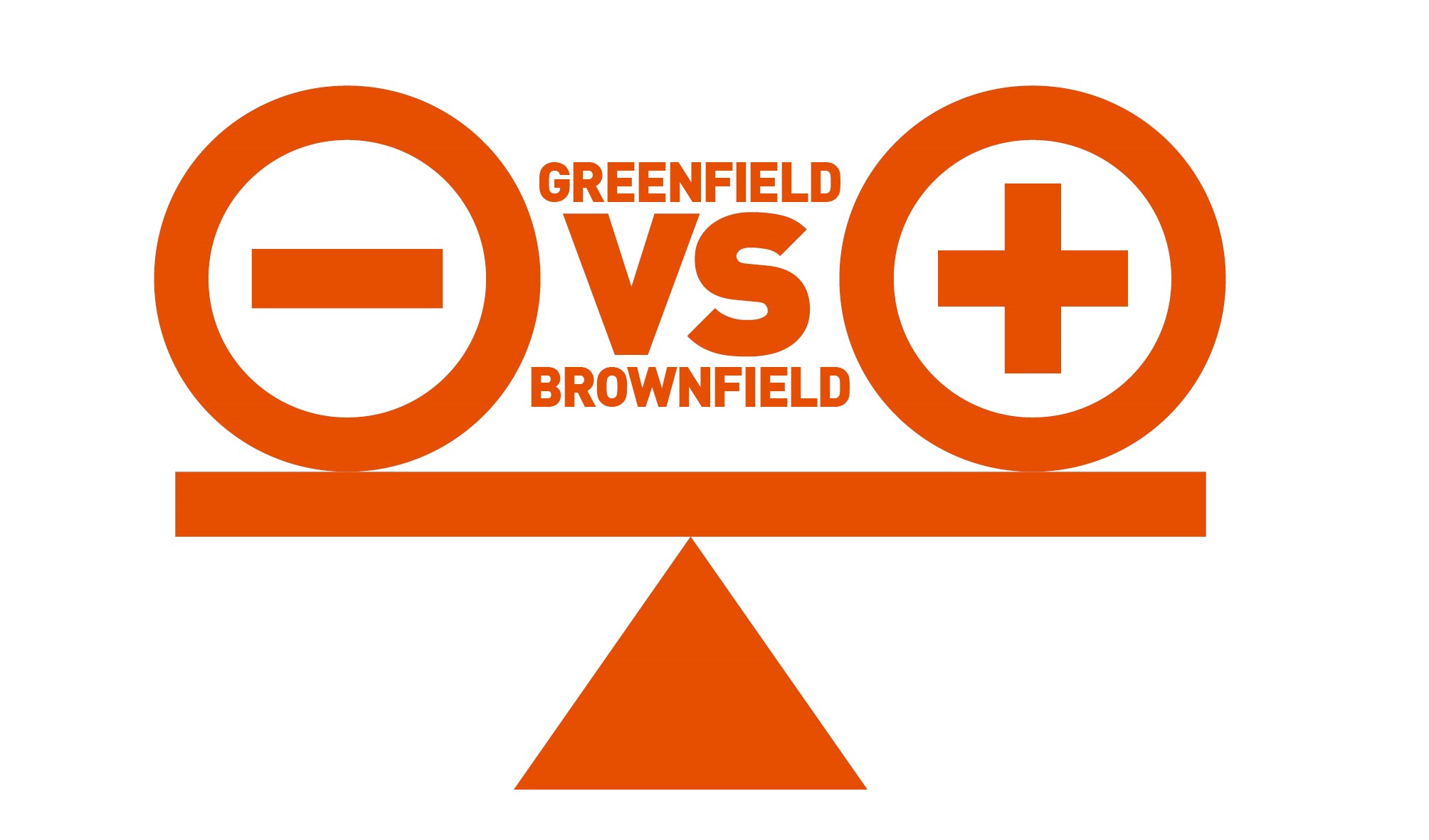If you are a manufacturer and have outgrown your facility or planning to set up in a new location, you have a range of options open to you. In this article we share the opportunities and challenges with greenfield or brownfield development and model costing of what value is retained in a brownfield solution.
The main decision is typically deciding between owning or leasing a facility. You may be deciding what is best for you between a greenfield or brownfield development. Once you have thought through those decisions, there are options for how to ‘procure’ the facility.
Greenfield options:
• Engage consultants and contractors to have a new facility constructed that you own
• Enter a pre-lease agreement with a developer to build the building shell and fit-out, that you lease
• Enter a pre-lease agreement with a developer to build the building shell. You lease the building only and fund your own fit-out
Brownfield options:
• Buy an existing warehouse that you fund the fit-out for manufacturing
• Lease an existing warehouse that you or the landlord fund the fit-out for
The benefits of greenfield are obvious. A facility can be purpose built and located in an optimum location and environment. But purpose-built doesn’t necessarily mean that it will come at the lowest cost as there are many contributing factors, such as the cost of capital raising, time to develop and landlord incentives.
Brownfield projects generally have the benefit of existing approvals, existing infrastructure and earlier possession. Financial advice is also required in determining some of these factors, however the following provide some considerations around comparing brownfield and greenfield scenarios.
Due diligence is critical to validate planning compliance, physical constraints, and building suitability however capital costs, when opting for a brownfield site, are often not well understood.
As manufacturers focus on the processing of their product, the building is often viewed as only a means for enclosing the process. However, the more you can drive down costs associated with building enclosure, the more can be spent on value engineering fit-out to optimise yield or throughput.
The benefits of an existing building can often be over-valued. For example, if an existing floor slab needs to be demolished to install drainage, the value of the existing building is diminished. Likewise, if the process areas require room refrigeration, then the typical precast enclosing walls become superfluous if an additional insulated panel wall is required on the inside.
Wiley ran some numbers on a theoretical 10,000 sqm warehouse to be converted into a processing facility;
| ITEM | APPROX % OF EXISTING COMPONENTS THAT MAKE CONTRIBUTION | NOTES |
|---|---|---|
| Builder’s preliminaries | 50% | Previous preliminary costs have no cost benefit to any new fit-out |
| Earthworks | 100% | Full value retained |
| Footings | 100% | Full value retained |
| Slab and Slab Finishing | 30% | If new drainage is required, there is the cost of demolition and new floor slab, plus slab finishes |
| Precast Concrete Walls | 30% | If new insulated panel walls are required on inside of existing precast panel walls, then walls become redundant except to areas like dry storage |
| Doors, Windows | 30% | As above, existing roller shutters can become redundant |
| Roof Structure and Roof | 80% | Most roof and roof structure can be retained, however roof strengthening is typically required to support insulated panel ceilings and services |
| Protective metalwork | 80% | Most metal work can typically be re-utilised |
| Amenities and Small Office | 90% | Most amenities and offices can be re-utilised |
| Stormwater, Sanitary Drainage, and Water | 90% | Most storm water and sanitary drainage is of value |
| Electrical and Communications | 50% | Typically, additional HV supply, switchboards, lighting and general power is required making existing services partially beneficial |
| Fire Protection | 80% | Most fire protection elements can be re utilised |
| External Works incl Pavement | 90% | Most external pavement can be re utilised |
| Design and Contractor’s Margins | 50% | Value only on utilised existing elements |
The case study showed that a $15,000,000 total development retained $9,478,000 value of the existing building or development. This is around 63% value retained. It is important to note too this assumes the building meets current compliance codes and does not need upgrades of fire services and sprinklers, upgrade of electrical switchboards or removal of EPS panels for example. The value will further be diminished in these cases.
In summary, depending on the degree of fit-out and existing building retention, it is not unrealistic to say that an additional third of the original building’s value will be spent on the building shell even before internal fit-out costs are considered. If you will own the facility, the costs will be a capital cost. If you lease the building, the costs may be recovered through lease costs or the landlord may fund works that add value to their investment. Be mindful that a landlord may require at the end of the lease that you to return to original condition any changes made to suit your requirements.
Each scenario can vary greatly, but the message is not to assume that an existing building contributes 100% to a building shell component. In addition to Wiley Services for Due Diligence, Wiley can provide Value Planning Services to assist with decision making around greenfield versus brownfield. Make sure you get the right advice before proceeding with your facility.


